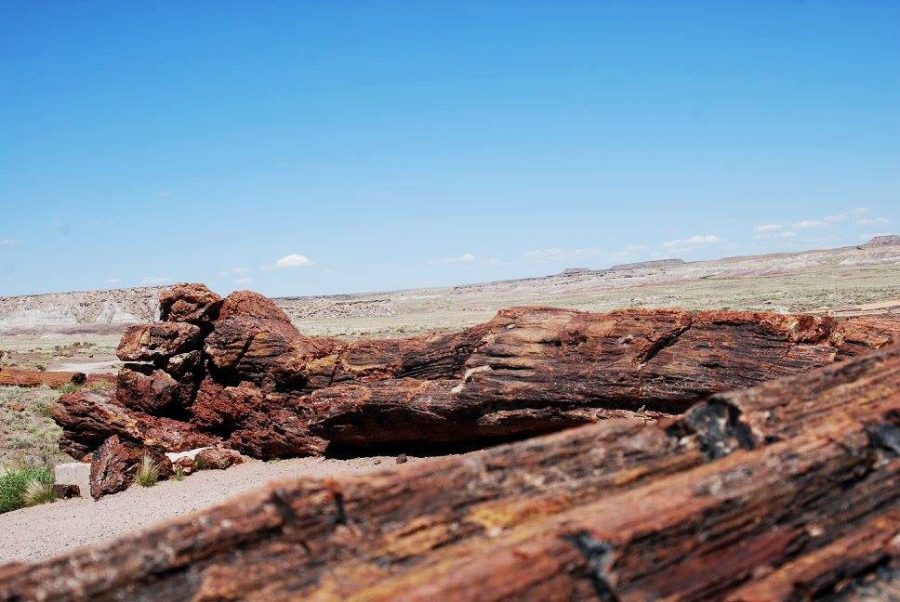“Do you have any rocks or minerals in the car with you?” asked the park ranger.
“Yes, a geode and piece of petrified wood that we purchased at the gift shop,” my father said.
“Is it wrapped up?” asked the ranger.
It was. “You are good to go! Have a nice visit,” the ranger said.
Our trip through the Petrified Forest National Park had begun.
The Petrified Forest National Park sits along what was Route 66 in northeastern Arizona . The towns leading up to the park play on their ancient origins with dinosaur statues and gift shops all advertising petrified wood for sale.
The park itself began as a national monument. It was designated as a national park on Dec. 9, 1962 and was recently expanded under the Bush administration. In it’s early beginnings, the park was even frequented by conservationist John Muir.
In its present form, the Petrified Forest is home to historic monuments, fossilized plants and animals and a vast expanse of petrified wood.
As we drive further inside the park, I read over the visitor’s guide. Over the years, vast majorities of people have illegally removed petrified wood from the park. With stories about the removal of the wood, people began to believe that the park was disappearing. Even without the wood that had been removed up until now, the Petrified Forest is still strewn with petrified wood, telling the story of a much different climate than today.
Around the park there are more than a dozen lookout vistas and hiking trails, as well as off the beaten path hiking trails. We decided to undertake an off the beaten hike to the Onyx Bridge, a 30-foot long petrified log from the Triassic period.
Our hike takes us down into a canyon and we follow a small desert wash toward the Onyx Bridge. Along the way, man-made rock piles known as cairns help us confirm that we are on the right path. Each piece of petrified wood we walk past looks like a redwood tree that has just fallen to the ground and been chopped up by a lumberjack. When you touched it though, it was hard as a rock, with noticeable crystals within.
Each tree we pass is a fossilized skeleton of a climate past, one that saw other towering coniferous trees and pond ecosystems. Groundwater helped transport silica into the pores of the wood, creating a hard rock out of the once soft wood.
Each color within the fossilized wood represents a different mineral. Most of the petrified wood has a hint of red in it, indicating the presence of the mineral hematite. Magnetic, pure iron gives some wood its green coloring. White crystals in the wood are formed from pure silica, a mineral created from silicon and oxygen.
At this point, the petrified wood is rock, not wood. The wood was permanently mineralized when silica replaced the wood, preserving its rings and appearance. The logs you can see today have been exposed after years of erosion.
To get to the Onyx Bridge, you have to cross a huge wash called the Lithodendron Wash. Walking across it is reminiscent of walking on a beach. It feels like at any minute the wash may spring to life with water, although there is not a cloud in sight.
We finally arrive at the bridge. The length of it is staggering. It is hard to imagine a tree like this existed in this desert environment.
Hiking back up the canyon from the bridge, we survey the wood that litters the inside of the canyon. Nature has found a way to provide a glimpse into the past through geology.
We drive out of the park and the ranger again asks us if we have any rocks or minerals in the car with us. We have nothing but the geode and petrified wood we have purchased from the gift shop. The rock forest is still plentiful for more generations to see.
Follow Natalie Robbins on Twitter.









